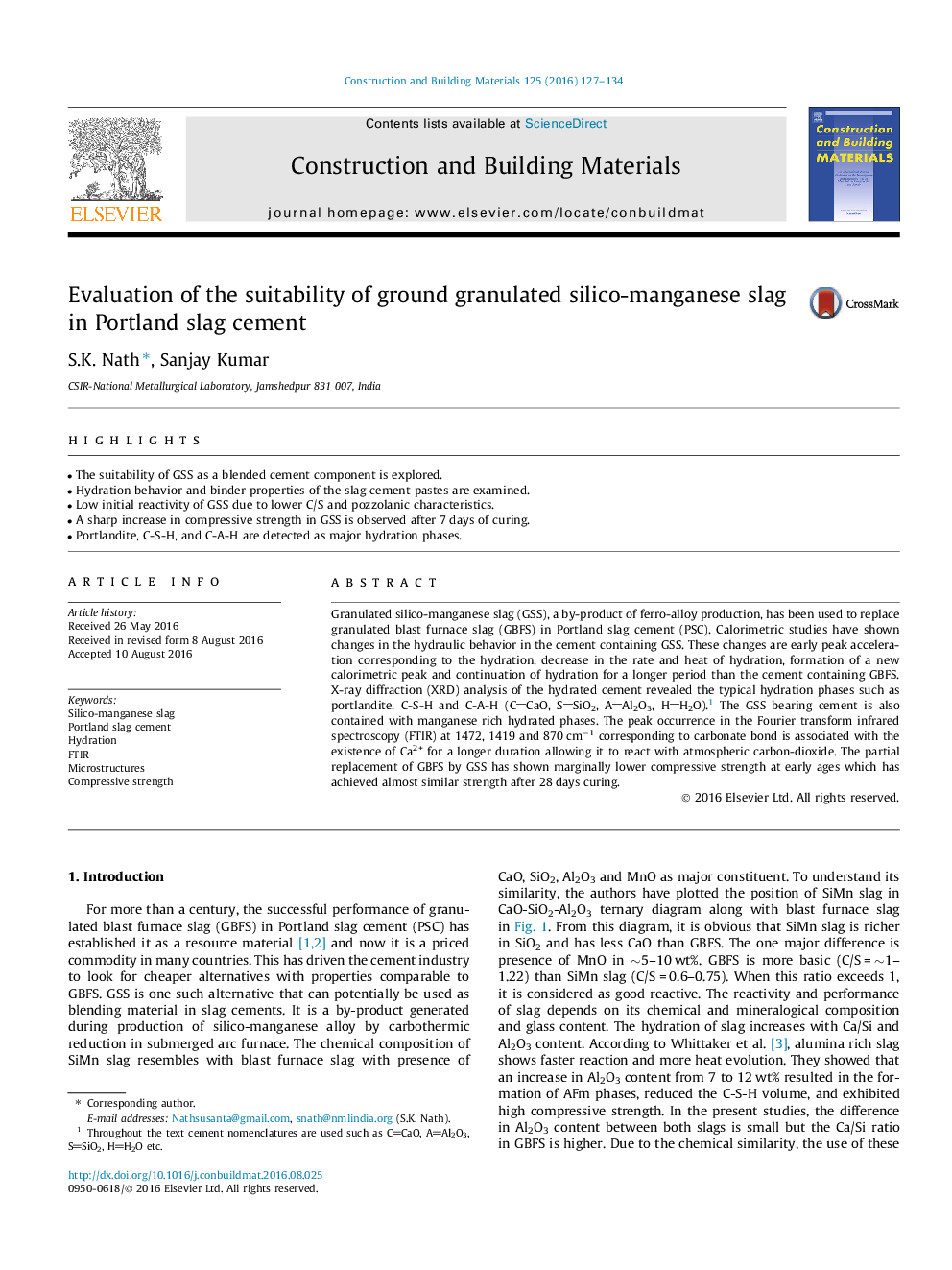| Article ID | Journal | Published Year | Pages | File Type |
|---|---|---|---|---|
| 4918603 | Construction and Building Materials | 2016 | 8 Pages |
Abstract
Granulated silico-manganese slag (GSS), a by-product of ferro-alloy production, has been used to replace granulated blast furnace slag (GBFS) in Portland slag cement (PSC). Calorimetric studies have shown changes in the hydraulic behavior in the cement containing GSS. These changes are early peak acceleration corresponding to the hydration, decrease in the rate and heat of hydration, formation of a new calorimetric peak and continuation of hydration for a longer period than the cement containing GBFS. X-ray diffraction (XRD) analysis of the hydrated cement revealed the typical hydration phases such as portlandite, C-S-H and C-A-H (CCaO, SSiO2, AAl2O3, HH2O).1 The GSS bearing cement is also contained with manganese rich hydrated phases. The peak occurrence in the Fourier transform infrared spectroscopy (FTIR) at 1472, 1419 and 870Â cmâ1 corresponding to carbonate bond is associated with the existence of Ca2+ for a longer duration allowing it to react with atmospheric carbon-dioxide. The partial replacement of GBFS by GSS has shown marginally lower compressive strength at early ages which has achieved almost similar strength after 28Â days curing.
Related Topics
Physical Sciences and Engineering
Engineering
Civil and Structural Engineering
Authors
S.K. Nath, Sanjay Kumar,
